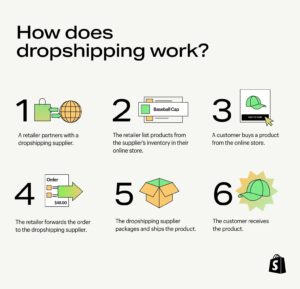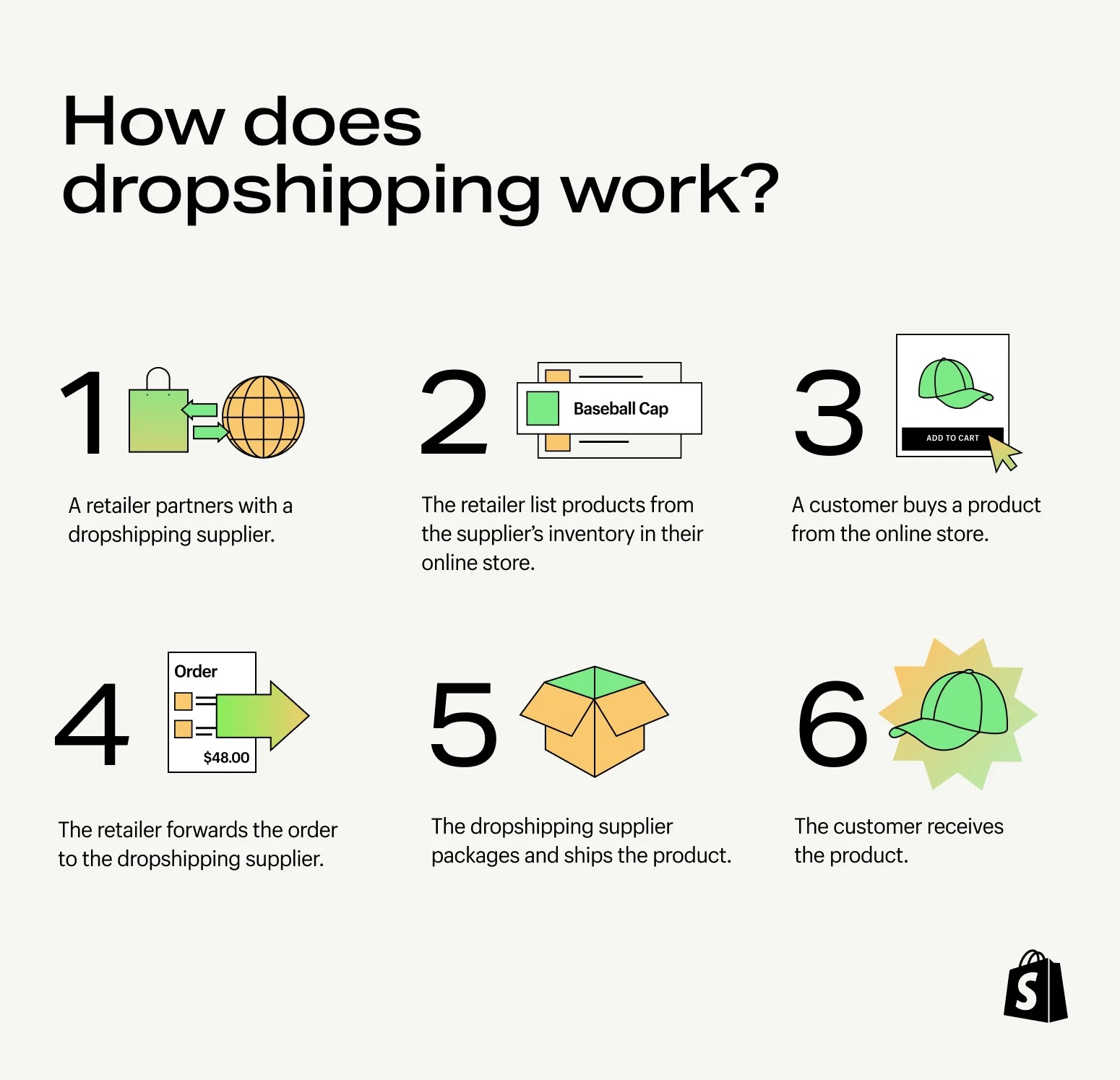Dropshipping
What It Is: Dropshipping is an e-commerce fulfillment method that allows you to sell products online without holding any inventory yourself. Instead of stocking goods, you partner with a third-party supplier. When a customer places an order on your online store, you then purchase the item from your supplier, who directly packages and ships the product to your customer. This model enables homepreneurs to run an online retail business with minimal upfront investment in inventory and no need for a physical warehouse. Outlook: The global dropshipping market is experiencing robust growth. According to Shopify, it was valued at $351.8 billion as of 2024, marking a significant 23.6% increase from the previous year. Experts predict a strong average annual growth rate of 24.39% for dropshipping between 2020 and 2026, when the industry is projected to surpass $500 billion. This indicates a thriving and continuously expanding opportunity for online sellers. (Reference: https://www.shopify.com/blog/is-dropshipping-worth-it) How It Works (The Process):- Retailer (You) Partners with Supplier: You establish a relationship with a dropshipping supplier.
- Product Listing: You list products from your chosen supplier's inventory on your online store.
- Customer Purchase: A customer buys a product from your online store.
- Order Forwarding: You receive the order and payment from the customer, then forward the order details and payment (minus your profit margin) to the dropshipping supplier.
- Supplier Fulfillment: The dropshipping supplier packages the product.
- Direct Shipping: The supplier ships the product directly to your customer.
- Customer Receives Product: The customer receives their order, often appearing as if it shipped directly from your store.
- Minimal ($0 - $100): You can start with effectively no upfront cost by utilizing free e-commerce platforms or free trials of paid platforms. Your primary initial investment will be your time for research and setting up your store.
- Low to Moderate (Hundreds to Low Thousands): As you scale, costs can include monthly fees for e-commerce platforms (like Shopify after a trial), domain name registration, premium themes or apps, and crucial digital advertising expenses (e.g., Facebook Ads, Google Ads) to drive traffic to your store.
- Customer Service: Providing excellent support, handling inquiries, and resolving potential issues (e.g., shipping delays, product defects).
- Organization & Management: Keeping track of orders, suppliers, and customer communications.
- Market Research & Trend Spotting: The ability to identify profitable niches, in-demand products, and emerging market trends.
- Digital Marketing: Essential for driving traffic to your online store, including:
- Social Media Marketing
- Search Engine Optimization (SEO)
- Paid Advertising (e.g., Facebook Ads, Google Ads)
- Supplier Management: Building and maintaining good relationships with reliable suppliers.
- Choose a Niche & Product: Identify a specific market niche and select products to dropship that are in high demand or solve a particular customer problem.
- Find Reliable Suppliers: Research and partner with trustworthy dropshipping suppliers who carry the products you wish to distribute and offer good terms.
- Create Your Online Store: Build your e-commerce website using a platform like Shopify, WooCommerce (for WordPress), BigCommerce, or other online store builders, enabling shoppers to browse your selection.
- Set Up Order Fulfillment: Integrate your store with your chosen supplier(s) to automate or streamline the order forwarding process.
- Develop Marketing Strategies: Plan and execute digital marketing efforts to attract customers to your online store.
- Manage & Optimize: Continuously monitor sales, analyze customer feedback, and optimize your product offerings and marketing campaigns.
- Niche Selection: Choose a less popular or highly specialized niche. This reduces competition and allows you to target your marketing more effectively.
- Build a Brand: Don't just be a faceless dropshipper. Cultivate a unique brand identity, complete with a compelling story, mission, and superior customer experience.
- Superior Customer Service: Provide exceptional customer support, as you are the direct point of contact for the customer, even though a third party ships the product.

